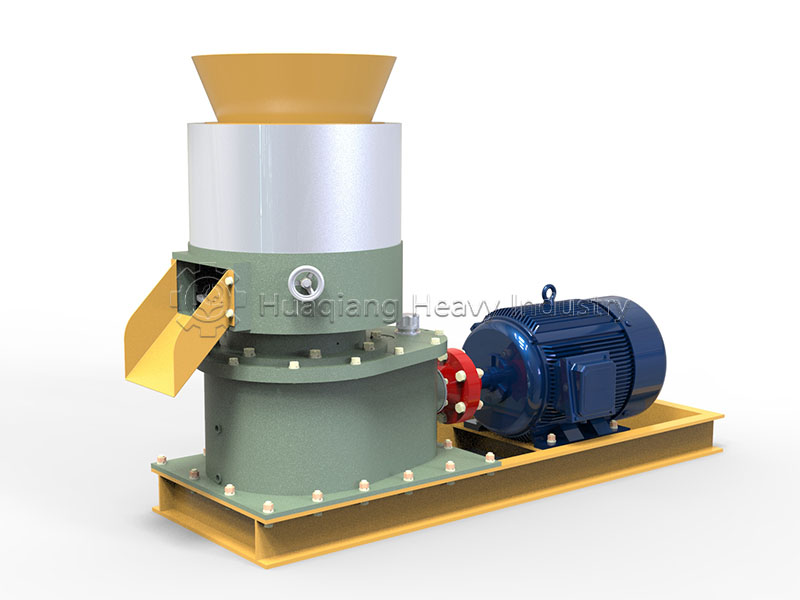The core challenge in biofertilizer production lies in ensuring that the granulation process does not destroy the activity of the microbial agent. Most functional bacteria (such as Bacillus subtilis and Trichoderma harzianum) are significantly inactivated at temperatures above 45°C. The flat die pelleting machine, with its low-temperature granulation capabilities, is a suitable choice for biofertilizer production. Its core advantage lies in its low-friction, no-additional-heat granulation process.
The flat die pelleting machine utilizes a vertical extrusion process, with the rollers and the die in contact with each other over a surface area rather than at points. This results in more uniform force per unit area, less frictional heat generation, and a temperature within the granulation chamber typically maintained at 35-40°C, well below the inactivation threshold of the microbial agent.
Furthermore, the machine does not rely on high-temperature conditioning or hot air conditioning; instead, it achieves granulation solely through the viscosity of the raw material and moderate extrusion, eliminating the need for additional heat input.

Furthermore, the flat die granulator’s speed is adjustable (typically 30-50 rpm). For biofertilizer raw materials with high microbial content, the speed can be reduced to below 30 rpm to further reduce frictional heat generation and ensure a microbial survival rate above 85%.
In practical applications, it is even more effective when used with a “room-temperature binder.” This eliminates the need for heating and dissolving the pellets, while also improving the pelletizing efficiency and complementing the flat die pelleting machine‘s low-temperature characteristics. This ensures the biofertilizer’s core function (microbial activity) while producing uniform pellets, meeting the dual requirements of “functionality” and “commerciality.”